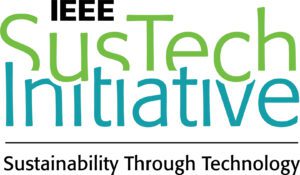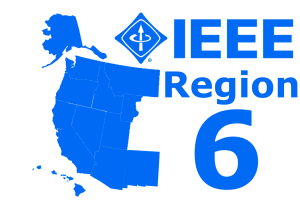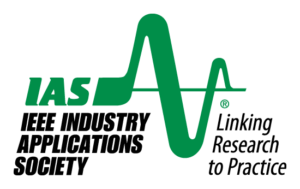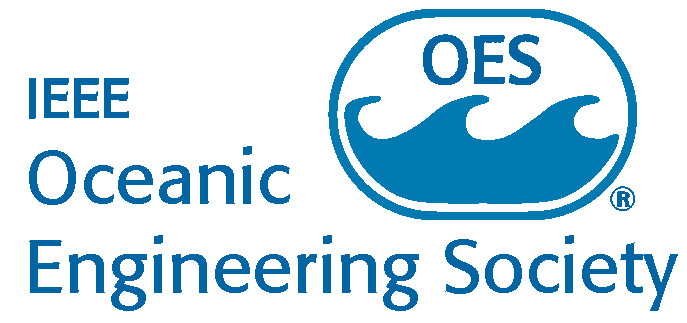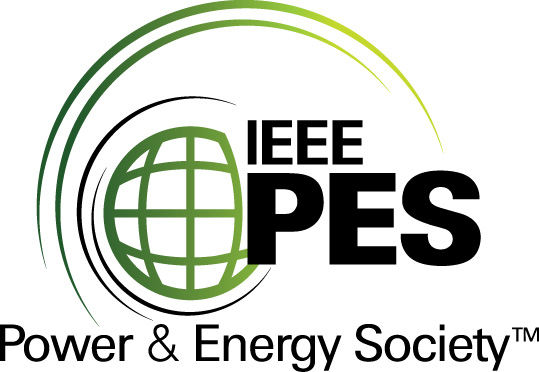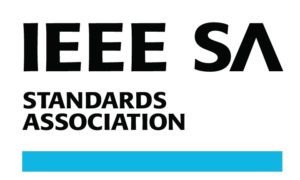Keynote and Invited speakers 2020
PRELIMINARY
| Kay Das* | “Challenges of the Connected Vehicle Revolution“ |
| Allen Monroe, Living Desert Zoo and Gardens | “The Reality of Our Changing Climate and How it Affects Our Planet and Wildlife“ |
| Seth Potter* | “Orbit Options for Near-Term Space Solar Power“ |
| Glenn Roquemore* | “Lessons learned from the July 2019 Ridgecrest, CA earthquakes, changes how we determine seismic risk in buildings“ |
| Dong Tan, Northrop Grumman Aerospace Systems* | “Power Electronics, Smart Grid and Grid Modernization“ |
| Marty Waldman, Space Information Labs | “Small Modular Reactors and Microgrids for Military Use“ |
* Virtual Program Keynote
Challenges of the Connected Vehicle Revolution
Kay Das, Life Member IEEE
AM Keynote: Saturday April 25, 8-8:40am
Abstract:
There is currently much on-going activity in the research and design of systems to enhance the safety of vehicular traffic on roads and highways. These include vehicle-to-vehicle based and vehicle-to-infrastructure based electronics systems with extension to personal devices. These systems need to work collaboratively with acceptable latencies in an intelligent and reconfigurable network environment. This is characterized by multiple localized and dynamically changing motion control loops which include each individual vehicle driver (and pedestrian). Systems will comprise a mix of existing and new technologies such as laser, imaging, computer vision, radar, cellular, WiFi, GPS, millimetric Waves, and others. A range of products and systems will compete for market entry from diverse developers and nations and the need for standardization is paramount. The behavior of an autonomously driven vehicle and how it could indeed improve accident rates compared to an intuitive human under diverse conditions is a contentious issue. The cost of failure is high as human life is in the loop. Replacing the intuition-driven human with multiple pre-programmed computing engines and sensor and actuator platforms will present a significant system and software engineering challenge. Not least because the transition from human to computer will not occur overnight.
A significant challenge exists in validating real time software-driven prototypes, final systems, and maintaining performance while in operation. The major players in this traffic evolution will be the government (legislative entity), the insurance companies (risk managing entities) and vehicle manufacturers and their technology partners (product developers). This will create new watersheds in the industry. The customers are vehicle drivers of all kinds: automobiles, trucks, tractors, vehicles with trailers, two-wheeled motorized vehicles, bicycles, and pedestrians. This presentation overviews some of the challenges and offers some directions for this burgeoning industry. A spotlight will be shone on lessons learnt from the aviation industry.
Bio:
 Kay Das was GPS Program Manager from 2007 to 2013 for LinQuest Corporation in Los Angeles where he additionally led new business development thrusts in the commercial and automotive safety markets. He has previously held responsibilities as R&D Director for STMicroelectronics’ Asia Pacific region in Singapore. He is a past winner of a Singapore Government National Award for “The Initiation and Expansion of High-value R&D and Promotion of Partnerships”. He has managed the development of several silicon-based systems with over 40 years industry experience and built engineering teams from scratch in the US, Singapore, China, and Great Britain. He has overseen the development of over eighty patents.
Kay Das was GPS Program Manager from 2007 to 2013 for LinQuest Corporation in Los Angeles where he additionally led new business development thrusts in the commercial and automotive safety markets. He has previously held responsibilities as R&D Director for STMicroelectronics’ Asia Pacific region in Singapore. He is a past winner of a Singapore Government National Award for “The Initiation and Expansion of High-value R&D and Promotion of Partnerships”. He has managed the development of several silicon-based systems with over 40 years industry experience and built engineering teams from scratch in the US, Singapore, China, and Great Britain. He has overseen the development of over eighty patents.
Now in retirement, his current pursuits are the application of communication and location technologies such as 5G/DSRC, Internet of Things, and GPS to automotive safety and the Connected Vehicle revolution. He holds a MS in Electronics Systems from the Cranfield Institute of Technology, UK. A regular presenter of talks and papers, he is an IEEE Life Member and a member of several IEEE societies. His scientific interests include astronomy and cosmology. He is also a professional musician, a published author, and an Internet radio deejay.
The Reality of Our Changing Climate and How it Affects Our Planet and Wildlife
Allen Monroe, Living Desert Zoo and Gardens
Abstract:
Hotter summers, drier grasslands, more frequent and more intense fires. We are experiencing a change in our climate that is threatening our homes, our lifestyles, and importantly our wildlife and wildlands. Allen Monroe, President and CEO of The Living Desert Zoo and Gardens, will detail these changes but will also share reasons why we should be hopeful. We can combat climate change—if we work together!
Bio:
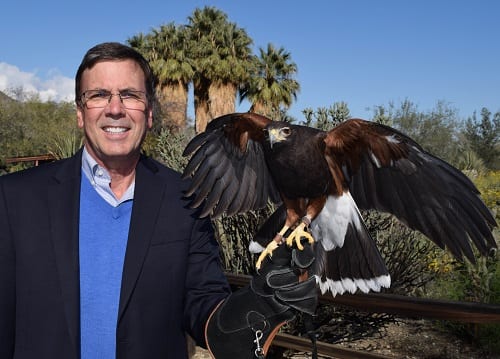 Allen Monroe received his BS in Wildlife and Fisheries Sciences from Texas A&M University and a Masters in Business Administration from the University of Texas.
Allen Monroe received his BS in Wildlife and Fisheries Sciences from Texas A&M University and a Masters in Business Administration from the University of Texas.
After college, he started working for zoos and public aquariums around the country including the National Aquarium in Baltimore, the Oklahoma City Zoo, the Indianapolis Zoo and the North Carolina Aquarium. He currently is the President/CEO of the Living Desert Zoo and Gardens in Palm Desert, CA. In addition, he has worked as a research scientist with the Texas Parks and Wildlife Department and the U.S. Fish and Wildlife Service where he studied the effects of climate change on endangered species.
Orbit Options for Near-Term Space Solar Power
Lunch Keynote: Saturday April 25, 12:20-1:00pm
Seth D. Potter, Ph.D, SDP Space Systems
Abstract:
Studies of space solar power (SSP) for the commercial grid have usually considered transmitting power from geostationary orbit (GEO), via microwaves at frequencies below 10 GHz, where the atmosphere is relatively transparent. Due to beam divergence from that distance at such frequencies, system sizes must be large, leading to power levels of 1000 MW or more. However, the scale of the systems, and the need to develop low-cost routine access to space, make competing with traditional energy sources challenging in the near-term. More recently, studies by the US Naval Research Laboratory have considered SSP for nearer-term niche uses in remote locations. At such locations, providing power by conventional means can be challenging. Many remote locations are typically powered by generators, which depend on fuel delivered at great cost, often through hazardous environments. Power requirements for such users range from a few hundred kilowatts to several megawatts. Furthermore, some remote facilities are at high latitudes, which are inaccessible from geostationary orbit. This presentation will consider alternative orbits. Examples of such orbits are highly inclined orbits, which may be sun-synchronous, or have a repeating ground track, or both. In addition, elliptical orbits may be considered which have relatively long dwell times over ground sites that are beneath their apogee. Since non-GEO orbits do not remain over their intended ground sites, systems or constellations, of satellites must be designed, in which beam handoffs can provide a given ground site with power much of the time, while making maximum use of the satellites as multiple satellites serve multiple ground sites.
Bio:
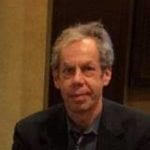 Seth Potter has been a leader in spaced based solar power for more than 20 years. He is also a major force behind the Los Angeles Chapter of Oasis, http://oasis-nss.org
Seth Potter has been a leader in spaced based solar power for more than 20 years. He is also a major force behind the Los Angeles Chapter of Oasis, http://oasis-nss.org
Lessons learned from the July 2019 Ridgecrest, CA earthquakes, changes how we determine seismic risk in buildings
Glenn Roquemore, Chancellor, California Southern University
Lunch Keynote: Friday April 24, 12:20-1:00pm
Abstract:
Active fault mapping in the Ridgecrest/China Lake area (Roquemore and Zellmer, 1986), was conducted with 1:12,000 scale low sun angle aerial photography and field mapping. Obvious traces of the Little Lake (LLF) and Airport Lake faults (ALF) were plotted on 1:24,000 scale maps and were later (1989) incorporated into the California Alquist-Priolo earthquake fault zone maps, typically used for construction planning. The LLF and ALF faults experienced earthquakes (E. Hauksson, L. Jones, J. Mori, S. Hough, G. Roquemore, 1995), accompanied by surface rupture, in 1982 (M4.9), and in 1995 (M5.4 and M5.8). Earthquake hazards planning in Indian Wells Valley (IWV) has been centered on the LLF and ALF.
On July 4th, a foreshock magnitude 6.4 occurred at the south end of IWV along a short EW trending left-slip fault. On July 5th, a mainshock occurred within IWV with a magnitude of 7.1. The M7.1 event was along a previously unrecognized fault to the east of the LLF and ALF. Unlike the segmented traces of the LLF and ALF, this new rupture was linear and fairly continuous. The 2019 M7.1 Ridgecrest Earthquake was California’s largest in more than 20 years and caused $1 Billion in damage. Faults with the most obvious surface traces may not be the ones that produce the next damaging earthquake.
Bio:
 Dr. Glenn R. Roquemore received his PhD in Geophysics (1980) from the University of Nevada, Reno, Mackay School of Mines. His research has focused on the study of active faulting, nationally and internationally, but largely along the Eastern California Shear Zone particularly in Indian Wells Valley and the Coso Range, California. Following his work at the University of Nevada, he joined the Earth and Planetary Sciences Division, Naval weapons Center, China lake, California. His primary research focused on earthquake and volcanic hazards along the Pacific Rim. Dr. Roquemore served a President of Irvine Valley College, California for 18 years and is now President Emeritus. Currently, Dr. Roquemore serves as Chancellor of California Southern University.
Dr. Glenn R. Roquemore received his PhD in Geophysics (1980) from the University of Nevada, Reno, Mackay School of Mines. His research has focused on the study of active faulting, nationally and internationally, but largely along the Eastern California Shear Zone particularly in Indian Wells Valley and the Coso Range, California. Following his work at the University of Nevada, he joined the Earth and Planetary Sciences Division, Naval weapons Center, China lake, California. His primary research focused on earthquake and volcanic hazards along the Pacific Rim. Dr. Roquemore served a President of Irvine Valley College, California for 18 years and is now President Emeritus. Currently, Dr. Roquemore serves as Chancellor of California Southern University.
Power Electronics, Smart Grid and Grid Modernization
Dong Tan, Northrop Grumman Aerospace Systems
AM Keynote: Friday April 24, 8-9am (Download PDF)
Abstract:
As we move forward to transform the current grid from electrical and electromechanical to electronic, electrical, and electromechanical, power electronics will bring a vast reservoir of knowledge in electronic and active control to bear in integrating renewable energy into utility grid. Specific areas where power electronics will make a difference will be discussed in detail. The role of structured microgrids will also be presented as the fundamental building blocks for future grids. Batteries are the last missing piece in grid modernization. Together with solar and wind, it is quickly becoming the preferred peaking reserves for many operators with huge technical and economic benefits for both the utility industry and system operators. Substation modernization will transform the way we deliver electricity in rural and remote areas.
Bio:
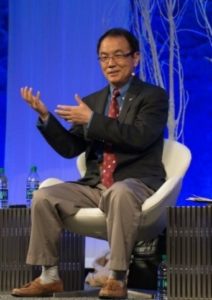 Dr. Dong Tan is Northrop Grumman Aerospace Systems Distinguished Engineer and Power Products Manager. He earned his Ph.D. degree from Caltech and is IEEE Fellow (since 2007).
Dr. Dong Tan is Northrop Grumman Aerospace Systems Distinguished Engineer and Power Products Manager. He earned his Ph.D. degree from Caltech and is IEEE Fellow (since 2007).
Well-recognized as an authority in near adiabatic power conversion and energy systems, he has pioneered many breakthrough innovations with high-impact industry firsts and record performances. His technologies have attracted significant customer funding and led to four product lines for the company and with hundreds of designs and thousands of delivered flight hardware that “significantly enhancing national security.”
He has given more than 50 keynotes and invited talks. He serves frequently on national and international funding, review, award, and prestigious position selection committees.
Small Modular Reactors and Microgrids for Military Use
Marty Waldman, Director of Business Development, Space Information Laboratories
Abstract:
In the not so distant future, all types of fossil and renewable heat sources for generating power will become capable of being retrofitted using new advanced reactor and Microgrid technologies. This will permit modernization of power generation plants without having to replace much of anything except the source and type of heat used to generate steam to power the generators. This can help eliminate the risks of the ‘deadly nightmare scenario’ of ‘what happens if the Grid goes down for months at a time’.
For more information, check out the NDIA website https://ndia-snv.org/reactors-%2F-microgrids
This tal will describe the implementation of America’s first Modular Reactor and Microgrid capability at Creech AFB, about 45 miles Northwest of Las Vegas, to provide power 24/7/365, for two to three decades between refueling cycles. Such an extraordinary capability will operations to remain intact, even in the event that ‘the grid goes down’ for non-expected lengthy periods of time (weeks, months etc.). Chances are that if ‘the grid goes down’ for such a long a period of time, those RPA operations will be more crucial than ever for protecting America during such a lengthy outage.
Bio:
 Marty Waldman brings over 42 years of DoD Navy and Air Force Program Management experience to SIL from his technical involvement with Cruise Missile, Space Shuttle, Titan IV, Minuteman, Peacekeeper and Eastern/Western Range Data Acquisition and Processing Systems.
Marty Waldman brings over 42 years of DoD Navy and Air Force Program Management experience to SIL from his technical involvement with Cruise Missile, Space Shuttle, Titan IV, Minuteman, Peacekeeper and Eastern/Western Range Data Acquisition and Processing Systems.
Having successfully authored and prosecuted numerous Patents, Mr. Waldman’s insight and understanding of what’s necessary to bring a product to the commercial/military market is continually demonstrated via the fielding of these and other key technologies at SIL.
Leading SIL projects include the Vehicle Based Independent Tracking System (VBITS) Patent # 5739787, Military Grade Small Satellites, Space Rated Battery/Power Systems, Vehicle Based Independent Range System (VBIRS), Patent Publication # US20170328678A1, granted as Patent #10,302,398 on 28 May 2019. All systems support Missile, Rocket, Hypersonic, Satellite, Aircraft and UAV operations.
Recent work with the NevadansCAN and NDIA has enabled Mr. Waldman to become a team-member with the Small Modular Nuclear Reactor/Microgrid development for Nevada test & implementation: https://ndia-snv.org/reactors%2F-microgrids
B.S. Electrical Engineering, Northeastern University. 33+ Years of Navy/Air Force Civil Service prior to his current Private Sector Service.




